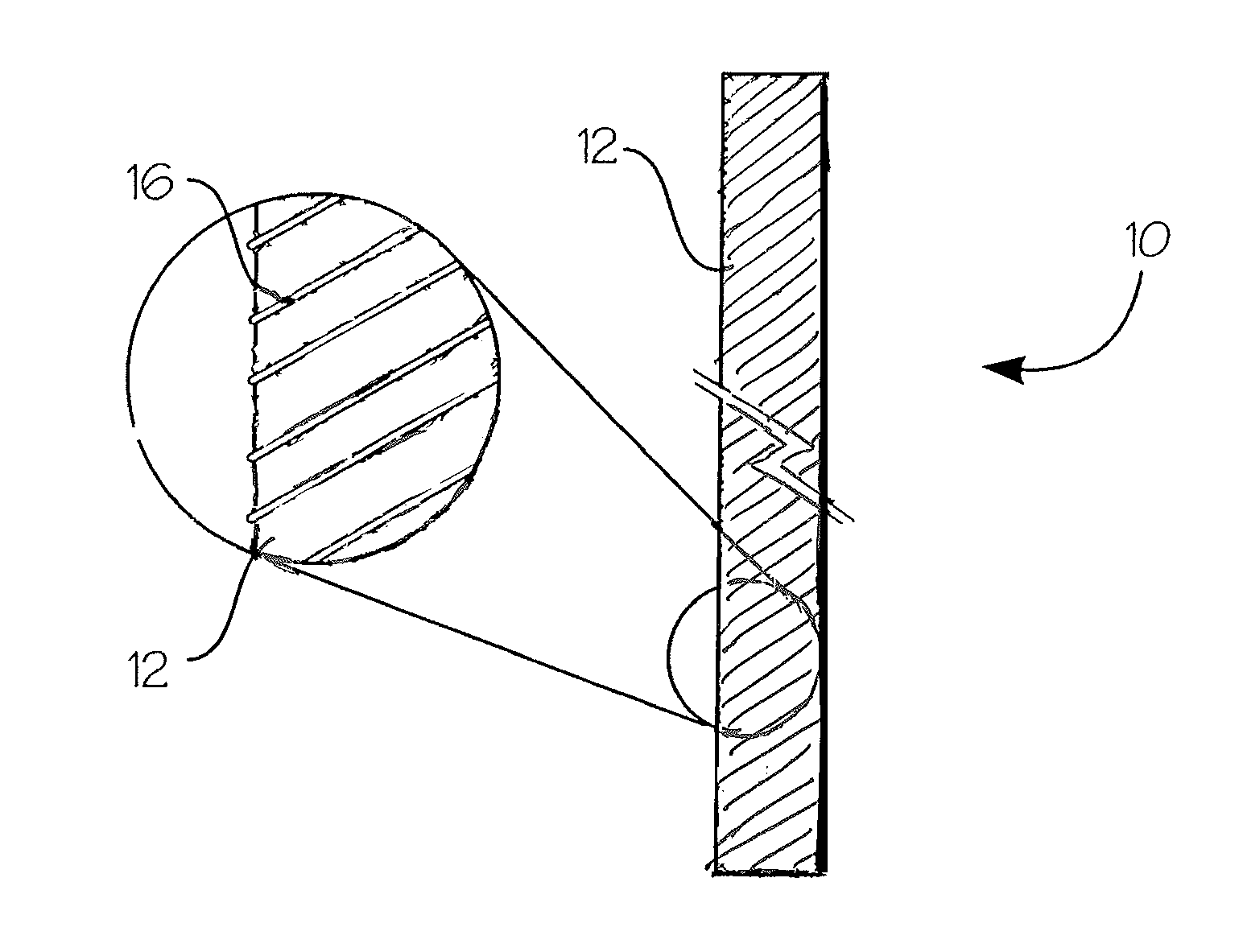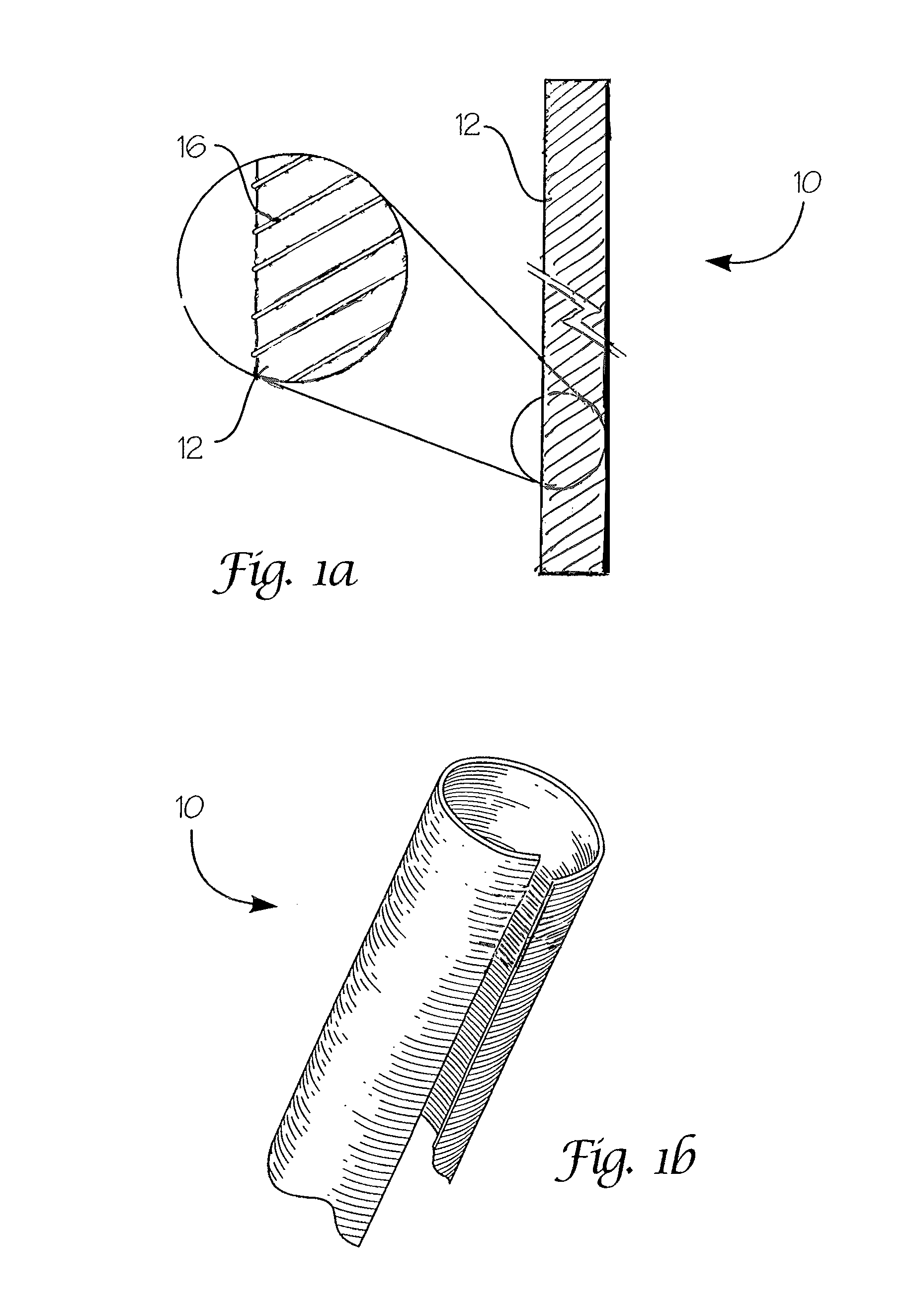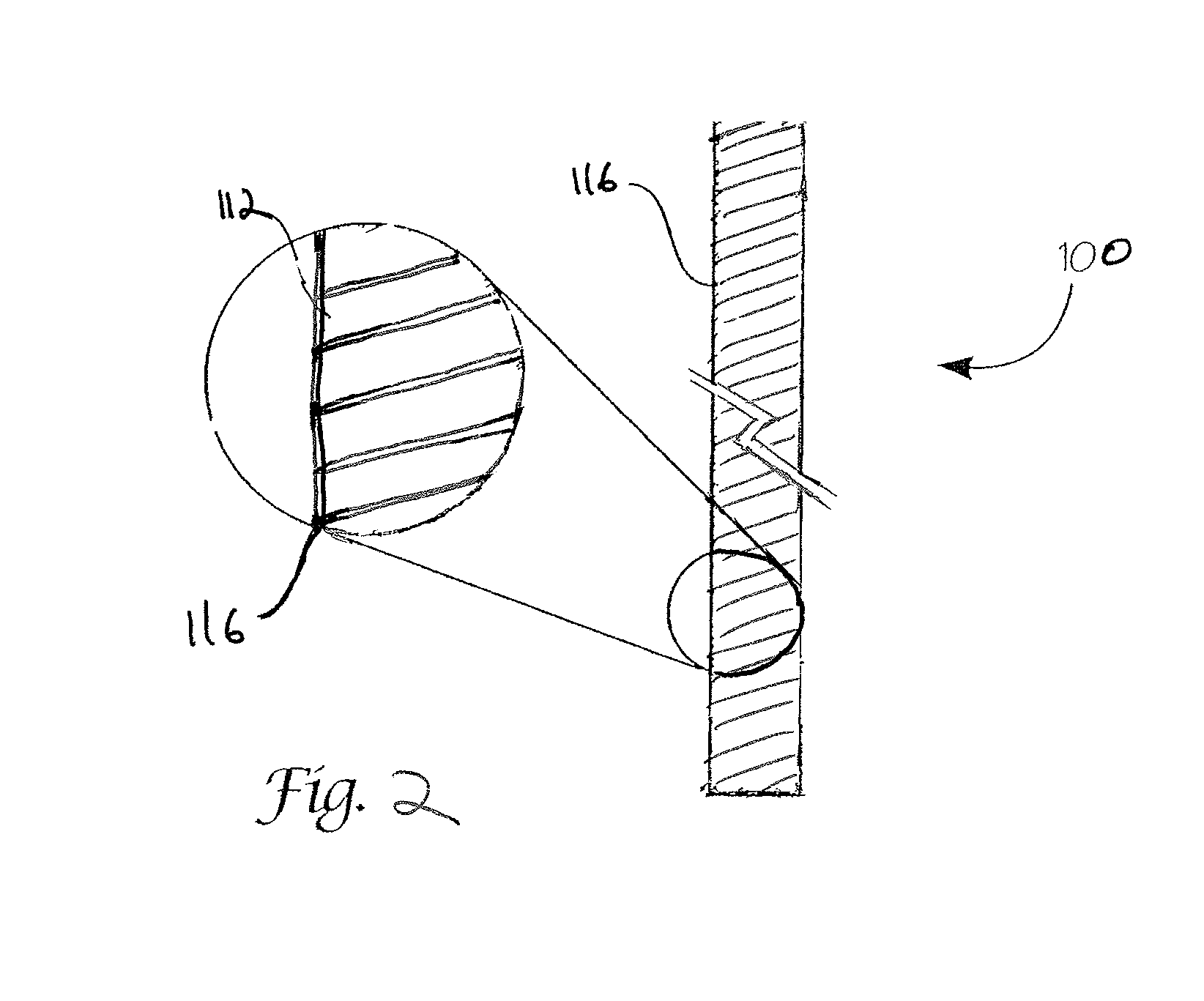Absorbable endo-urological devices and applications therefor
a technology of endo-urological devices and absorbable endo-urological stents, which is applied in the direction of prosthesis, catheters, blood vessels, etc., can solve the problems of no prior art described, absorbable endo-urological stents
- Summary
- Abstract
- Description
- Claims
- Application Information
AI Technical Summary
Benefits of technology
Problems solved by technology
Method used
Image
Examples
example 1
Preparation and Characterization of PEG-20k End-grafted with 90 / 10 l-Lactide / Caprolactone (P-I)
[0037]The PEG-20k (20 g) was dried at 110° C. under reduced pressure in a stirred reactor. To this, l-lactide (165.6 g) and ε-caprolactone (14.4 g) were added. The mixture was heated while stirring at 110° C. until a uniform solution is achieved. Stannous octanoate (207 mg) was then added to the polymerization mixture. After heating the latter to 160° C., the polymerization was continued for about 6 hours. The resulting polymer was isolated, ground, dried, and heated under reduced pressure at 110° C. to remove residual monomer. The polymer was characterized for identity and composition (IR and NMR), thermal properties (DSC), and molecular weight (GPC in dichloromethane). It was shown to have a Tm=174° C. and molecular weight of about 94 kDa.
example 2
Preparation and Characterization of PEG 35k Endgrafted with l-Lactide / ε-Caprolactone (P-II)
[0038]Copolymer P-II was prepared under conditions similar to those used in the preparation of P-I in Example 1. The following amounts of intermediate and catalyst were used: PEG 35k, 30 g; l-lactide, 156.3 g; ε-caprolactone, 13.7 g; stannous octanoate, 244 mg. The resulting product was isolated, ground, purified, and characterized as described for P-I. The copolymer was shown to have a Tm=175° C. and a molecular weight=75 kDa.
example 3
Preparation of Triaxial 90 / 10 (molar) ε-Caprolactone (CL) / Glycolide (G) Copolymer (P-III)
[0039]A mixture of CL (449.2 g) and glycolide (50.8 g) was mixed under dry nitrogen atmosphere in a predried reactor equipped for mechanical stirring. The polymerization was conducted under dry nitrogen atmosphere in the presence of trimethylol propane (8.38 g) as the initiator and stannous octanoate (2.73 mL of 0.2 M toluene solution) as the catalyst. The polymerization was completed after heating at 150° C. for 11 hours as determined by GPC. Traces of unreacted monomer were removed by distillation at 110° C. under reduced pressure. The molecular weight and thermal properties of the purified polymer were determined by GPC and DSC, respectively. The analytical data are summarized below: Mn=17 kDa; Mw=25 kDa; Tm=44.7° C.; ΔHf=58.3 J / g
PUM
| Property | Measurement | Unit |
|---|---|---|
| lengths | aaaaa | aaaaa |
| aspect ratio | aaaaa | aaaaa |
| molecular weight | aaaaa | aaaaa |
Abstract
Description
Claims
Application Information
 Login to View More
Login to View More - R&D
- Intellectual Property
- Life Sciences
- Materials
- Tech Scout
- Unparalleled Data Quality
- Higher Quality Content
- 60% Fewer Hallucinations
Browse by: Latest US Patents, China's latest patents, Technical Efficacy Thesaurus, Application Domain, Technology Topic, Popular Technical Reports.
© 2025 PatSnap. All rights reserved.Legal|Privacy policy|Modern Slavery Act Transparency Statement|Sitemap|About US| Contact US: help@patsnap.com



